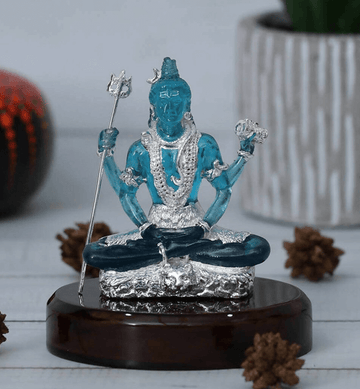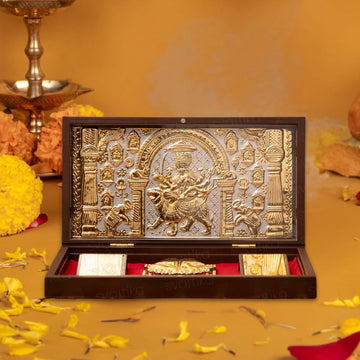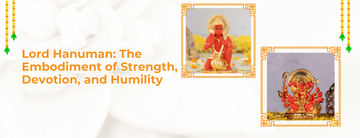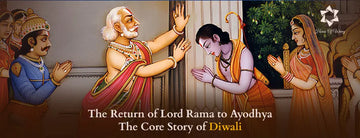Lord Hanuman, one of the most beloved and revered deities in Hinduism, is known for his incredible strength, unwavering devotion, and immense courage. His character, as depicted in the ancient scriptures, represents the ideal qualities of a devoted servant, a mighty warrior, and a wise sage. Hanuman’s popularity transcends religious and cultural boundaries, and he is worshipped across the world for his power to protect, heal, and bless.
Hanuman is the monkey god, the son of Anjana (a celestial nymph) and Kesari (a monkey king), and is often depicted as a symbol of physical strength, mental focus, and selfless service. He is also one of the central characters in the epic Ramayana, where he plays a pivotal role in the story of Lord Rama, helping him rescue his wife Sita from the demon king Ravana.
The Mythological Origins of Hanuman
Hanuman’s birth and life are surrounded by numerous legends that highlight his divine powers, immense strength, and unshakable devotion.
- The Birth of Hanuman
Hanuman’s birth is the result of a divine union. According to one version of the myth, Anjana, a celestial apsara (nymph), was cursed to be born as a monkey on Earth. After praying fervently to Lord Shiva, she was blessed with a son. Hanuman’s birth was the outcome of a special blessing from Vayu, the wind god. Vayu, who is also Hanuman’s father, carried the divine energy of Shiva and imbued Hanuman with supernatural powers. This divine lineage granted Hanuman immense strength, agility, and intellect.
In another story, Vayu himself played a significant role in Hanuman’s conception by carrying a part of Lord Shiva’s divine essence into Anjana’s womb. This connection with both Shiva and Vayu endowed Hanuman with extraordinary qualities, including the ability to change size, travel at great speeds, and perform feats of strength.
- Hanuman's Childhood and the Curse
Hanuman's childhood is full of mischievousness and wonder. As a child, Hanuman was extremely playful and curious. He once mistook the sun (Surya) for a ripe fruit and leapt to grab it, causing havoc in the heavens. When the gods tried to stop him, Hanuman’s immense power caused them to panic. The gods, seeing Hanuman’s power and energy, granted him several boons to ensure his protection and wisdom.
In one of the most famous myths, Hanuman was cursed by Sage Durvasa, who had become upset when Hanuman disturbed his meditation. The curse temporarily made Hanuman forget his divine powers. However, the curse was later lifted when Hanuman was reminded of his true identity by Lord Rama, to whom he was devoted. This was a turning point in Hanuman’s life, and from that moment on, he fully realized his potential and purpose.
Hanuman and Lord Rama
One of the most important and defining aspects of Hanuman’s character is his devotion to Lord Rama, the seventh incarnation of the god Vishnu. Hanuman’s unwavering faith in Rama, his dedication, and his selfless service to Rama and his kingdom form the core of the Ramayana, the ancient epic where Hanuman's role is highlighted.
- Hanuman's Role in the Ramayana
Hanuman's devotion to Rama is showcased in his selfless service during Rama’s battle to rescue his wife Sita from the demon king Ravana. Some of the key events involving Hanuman in the Ramayana are:
- The Leap to Lanka: One of Hanuman’s most famous feats was when he leapt across the ocean to reach Lanka(modern-day Sri Lanka), where Sita was being held captive by Ravana. Hanuman’s leap symbolizes the strength of devotion, overcoming obstacles, and fearlessly carrying out the will of the divine. Upon reaching Lanka, Hanuman delivered Rama’s message to Sita, reassured her, and returned with her jewelry to prove to Rama that she was alive.
- Burning of Lanka: After his mission in Lanka, Hanuman’s tail was set on fire. In retaliation, he used his tail to set parts of Lanka ablaze, showcasing both his strength and his sense of justice. Despite the destruction, Hanuman’s actions were a part of the divine plan to ensure Ravana’s eventual defeat.
- The Battle with Ravana: Hanuman played a crucial role in the final battle between Rama and Ravana’s forces. His strength and bravery in the war were instrumental in Rama’s victory. Hanuman is said to have used his knowledge of sacred texts and his divine powers to help Rama.
- The Sanjeevani Herb: Another legendary episode is Hanuman’s retrieval of the Sanjeevani herb, which was necessary to heal Rama’s brother Lakshmana, who had been injured in battle. When Hanuman could not identify the herb, he lifted the entire mountain and brought it to the battlefield.
- Hanuman's Devotion to Rama
Hanuman’s devotion to Lord Rama is unparalleled. His devotion is so deep that he is often referred to as Rama's most loyal servant. Hanuman's famous chant, "Sri Ram Jai Ram Jai Jai Ram" expresses his eternal love and reverence for Lord Rama. Hanuman is the embodiment of Bhakti (devotion) and is often regarded as the ultimate devotee, showing that true devotion can lead to divine strength.
Hanuman’s Iconography
Lord Hanuman is typically depicted as a monkey-faced god with a muscular human body. He is shown in various poses, each symbolizing different aspects of his divinity and character:
- Monkey Face: Hanuman’s monkey face symbolizes humility and the reminder to stay grounded, even while possessing great strength and power.
- Muscular Body: His muscular body signifies physical strength, vitality, and the energy required to overcome obstacles.
- Carrying a Mountain or Mace: Hanuman is often shown carrying a mace, a symbol of his strength and power, or a mountain (often referring to the Sanjeevani herb story).
- Tails: Hanuman’s tail is often depicted as long and flexible, representing his ability to perform great feats and serve as a symbol of protection.
- Dressed in Simple Clothes: Hanuman is often shown wearing a simple cloth or loincloth, emphasizing his simplicity, humility, and renunciation of material wealth.
Hanuman’s Qualities and Symbolism
Hanuman embodies many key virtues, which have made him a central figure in Hindu worship. Some of his core qualities include:
- Strength and Courage: Hanuman is a symbol of physical strengthand fearlessness. His strength is not just physical but also moral and spiritual. He shows that with determination, devotion, and faith, even the impossible can be achieved.
- Loyalty and Devotion: Hanuman’s unwavering loyalty to Lord Rama sets an example for devotees. His bhakti (devotion) to his lord teaches that true service is done without expecting anything in return, purely out of love and reverence.
- Wisdom and Intelligence: Hanuman is also known for his intellect and wisdom. He is a scholar and a master of the Vedas, showing that strength and wisdom are interconnected.
- Humility: Despite his immense powers, Hanuman is known for his humility. He never seeks glory for himself and always credits his achievements to Lord Rama.
- Protector and Healer: Hanuman is believed to have the power to protect his devotees from harm, remove obstacles, and heal physical or mental ailments. His name is invoked for protection and guidance, especially during times of distress.
Hanuman in Devotional Worship
Hanuman is worshipped in various forms across India and beyond, with temples dedicated to him found in almost every part of the world. Some of the most famous temples include:
- Hanuman Temple, Delhi: Known for its historical significance and immense popularity, the Hanuman temple in Connaught Place, Delhi, is one of the most visited places for devotees of Hanuman.
- Sankat Mochan Hanuman Temple, Varanasi: This temple in the holy city of Varanasi is famous for granting protection and removing obstacles in the lives of its devotees.
- Mehandipur Balaji Temple, Rajasthan: This temple is dedicated to Balaji, a form of Hanuman, and is famous for healing and exorcising negative energies.
Hanuman Chalisa
One of the most famous and widely recited prayers dedicated to Hanuman is the Hanuman Chalisa. It consists of 40 verses (chalisa) that praise the qualities, power, and devotion of Hanuman. Reciting the Hanuman Chalisa is believed to bring divine protection, mental strength, and the removal of obstacles.
Hanuman in Popular Culture
Hanuman’s figure has been widely celebrated in literature, music, art, and theater. His heroic feats and deep spiritual wisdom continue to inspire countless stories, TV series, and films. His figure also represents physical fitness, mental focus, and the triumph of good over evil.
Conclusion: Hanuman as a Divine Ideal
Lord Hanuman is a timeless symbol of devotion, strength, courage, and humility. His life and actions in the Ramayana showcase that true power comes not from arrogance or ego, but from unwavering faith, dedication to service, and complete surrender to the divine. For millions of Hindus, Hanuman is a beloved deity who offers guidance, protection, and inspiration to live a righteous life, full of love, loyalty, and compassion.
House of Wemy offers intricately crafted Hanuman Idols designed to enhance your home’s spiritual aura and also for Car Dashboard. Explore our collection online and find the perfect Idol for your home!










